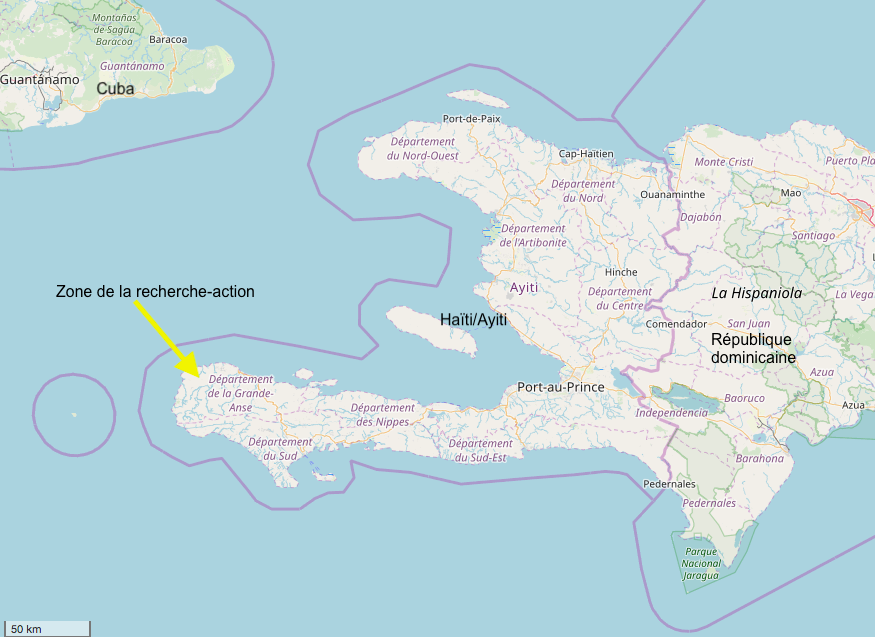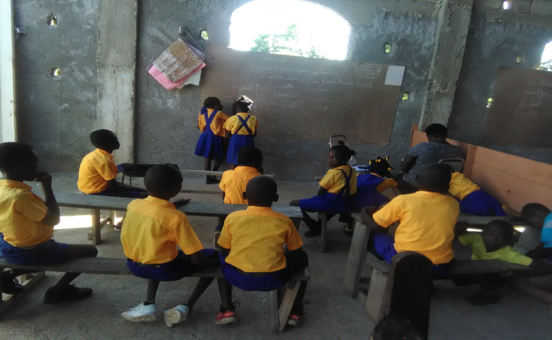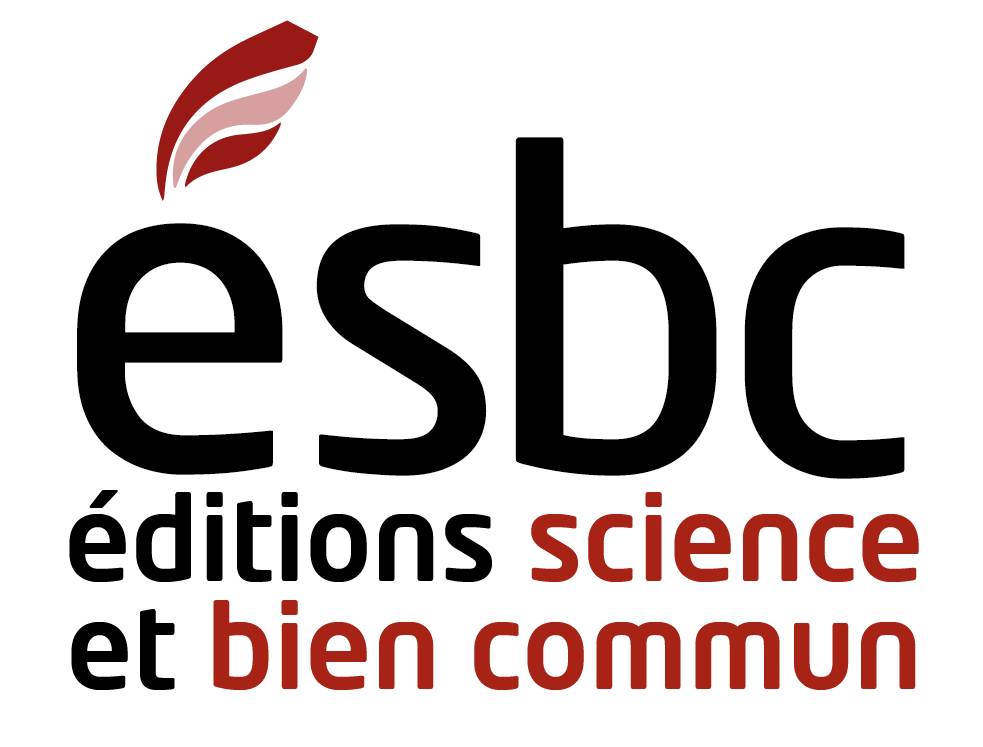Introduction: Context and Problem
Rochambeau Lainy
Following Hurricane Matthew (October 1-3, 2016), GIECLAT (Initiative Group for the Study of Cognition, Speech, Learning and Disorders) began a research project entitled Students with disabilities and pedagogical practices of teachers in the Sud, Nippes and Grand’Anse departments. This research project was conducted in partnership with a number of organizations inclusing CASAS (Commission for School Adaptation and Social Support), INUFOCAD (University Institute for Executive Training) and LangSÉ (Language, Society, and Education). The project brought together dozens of students in Education Sciences and Psychology from the State University of Haiti, the Public University of Grand’Anse, and teacher-researchers, executives from the Ministry of National Education and a US partner professor-researcher from Queens College, City University of New York. The main objective of this research, which will end in March 2021, is to examine the socioeconomic conditions of children with learning disabilities and teachers’ pedagogical practices.
This project began in May 2018. It involves students, parents, teachers, school principals, welfare professionals, territorial authorities, government officials and municipal agents. After twenty months of fieldwork, we would like to present a preliminary analysis of the data gathered to date.
Signs of disability are of course treated in parallel with the psychosocial problems facing the school population in the Sud, Grand’Anse and Nippes regions, which have been amplified and aggravated by the natural disasters of October 2016. The terrible consequences of Hurricane Matthew thus serve as an opportunity for us to reflect on a wider issue than only exclusion from schools in Haiti.
GIECLAT has conceived this post-Matthew research project to observe and identify the signs and the impacts of disability at school. This involved analyzing the learning of students with fundamental disabilities as well as teachers’ classroom practices. This approach was intended to inform the Ministry of National Education on the state of education for disabled students and to provide credible data to national and international organizations to help improve the situations of students with disabilities, schools’ environments as well as pedagogical practices in classrooms.
The research method used is mixed, combining quantitative and qualitative analysis. The research sample included 2,339 students with signs of disability, 272 teachers, 68 school principals, 100 parents and 20 NGO professionals, all of whom participated as respondents. Investigators included graduate students enrolled in psychology and educational science programs at the Grand’Anse Public University, and at the State University of Haiti and INUFOCAD.
The departments of Sud, Grand’Anse and Nippes were chosen as pilot study sites to examine the condition of the school population hit by Hurricane Matthew. Grand’Anse is particularly regarded as a priority area because it was severely devastated by the hurricane, and in response to a request for support expressed by Grand’Anse public university. Thirteen cities and four localities (Ravine Blanche, Guinaudé, Lopineau/Fond Cochon and Léon) of this department welcomed the investigators. Almost two thirds of the students from whom we collected data were also residents of the area.

GIECLAT selected the sample group of its respondents (students and teachers, in particular) among the first three fundamental levels of primary education (first, second and third grades). Research activities were carried out by a team of five researchers and 82 student interns, three of whom are in the Sud, three in the Nippes and 76 in Grand’Anse.

Basic views on disability
No modern society should accept a situation where one group of citizens is valued and the other undervalued because the latter has physical or mental challenges that prevent them from living fully or behaving appropriately. No child should be stigmatized or harmed because of his or her physical, psychological or mental conditions. The education system should be able to accommodate all children and provide appropriate environments suitable to different academic backgrounds and levels. The school system should give a proper environment to any child irrespective of their needs. (Saunier and Toullec-Théry, 2017: 112).
This would be the ideal for Haitian children, but I am aware that this is not the reality. There is a tendency in Haiti to label and stigmatize children and youth with disabilities rather than helping them develop their potential, to “learn together with others to live together with them” (page #) (Charles, 2013; Joint, 2006; 2008; Fallon & Mazawi, 2014; Lainy, 2017; Lefèvre, 2018). Neither private nor public school systems welcome children with obvious disabilities. Education officials are aware of the existence of visible, severe impairments (blindness, deafness, mutism/autism, physical disability). But they tend to be oblivious to other types of disability. Can we explain this attitude?
Today it is a necessity and a requirement for parents, educators and state officials to advocate for flexible teaching and pedagogical practices that address the needs of all children and especially the needs of children with learning disabilities so that the gap between them and the other children can be narrowed. It is important for educational institutions to be adapted so that they can provide for the needs of each student. Although, as a tropical country, Haiti is periodically hit by appalling natural disasters causing human and material damage, its school system is not prepared to accommodate many children with physical and visible disabilities.
According to the ‘Office des Personnes Handicapées du Québec (OPHQ)[1] the definition of disability is “a condition resulting in a significant and persistent incapacity; the subject is faced with obstacles in performing everyday activities” (Page#). The term handicap often carries a negative connotation. It is associated with the stereotypical image of a person in a wheelchair or with a white cane. The terms “disability” and “handicapped persons” have gradually replaced pejoratively connoted terms like crippled, invalid, paralytic, mutilated, retarded or stupid. However, the reality is quite the opposite, given that the range of disability varies enormously, from the most visible to those that are sometimes difficult to identify.
Disability and impairments
Disability is real in Haitian schools. However, it is easy to confuse disability with impairment, since the two have some semantic overlap. This terminology will be used throughout the entire study.
Let’s start with the idea that disability is caused by an impairment (motor, sensorimotor, mental, neurophysiological or neuropsychological) or any situation that makes a subject uncomfortable and unable to live or behave as society expects them to. Thus, based on an analysis of the salient points defined by many researchers describing physical or mental disability, Alain Giami (1994) concludes that “this term functions as a set of representations whose various aspects are emphasized and cherry-picked by the various categories of social actors working in the field that are designated as such” (p. 55). Sometimes disability involves notions of incapacity and deficiency, and sometimes social or medical problems. Marcel Calvez (1994: 62) does not contradict this assertion, as he notes that “the idea of disability refers to a social relationship that uses the physical or mental deficiency of the individual to establish his or her exclusion from ordinary social relations” (p. 62). As for impairment, even if it is closely related to disability, it specifically connotes insufficiency or lack of functioning of an organ, congenital malformation, trauma, amputations, diseases of the nervous system, failure, deficiencies, alterations of organs and body parts, etc., which are not necessarily related to disability.
At school, disabilities are often seen as a barrier to training and an argument for exclusion. Students with disabilities display behaviors that are difficult to manage. These students are sometimes forced to drop out. Impairments are defined as a situation that prevents someone from developing, from using all their potential, from engaging in any kind of learning by using all their physical, physiological and emotional potential.
Impairment, students with disabilities and social representation
Disability is sometimes linked to social choice. For example, one does not necessarily need to experience a deficiency to be disabled. In this case, daily experiences, political actions and social practices do not always converge towards inclusion and equity. At school, for example, students with disabilities are seen as special cases and treated as individuals that should elicit pity and compassion. What are the implications of these kinds of approaches and judgements for their academic achievement and socialization? How can a classroom that includes such students be transformed into a place of natural sharing and integration for everyone? Hurricane Matthew devastated parts of southern Haiti and caused enormous losses in terms of material and human life. How did the trauma from the aftermath affect students and teachers there?
Outlines of the contributions
The data that will be presented and analyzed in this compilation of articles were collected using questionnaires and observations in situ. The goal is to present the progress of our work and to show that disability has a significant impact on the development of all students, even those who are not considered to have any disability.
With those definitions in mind, here is a brief introduction to the themes touched on by the researchers in their preliminary results. Some of the studies stress the representation of disability, others the school environment and structure. A third category examines specific disorders including severe and visible impairments.
The first chapter is a review of the literature on inclusive education. In this contribution, Nathalis Wamba relates how the laws concerning the protection of students with impairments have been ignored. Rochambeau Lainy’s contribution considers language disorders and academic failure in students with disabilities. Samuel Regulus and Vijonet Déméro show that the study of disability must be considered not only from a biomedical point of view but also from legal and psycho-pedagogical perspectives in order to encourage the full development of the child. Samuel Regulus takes the life story of Marco, a paralyzed child, as an illustration of the need to apply the principles of cognitive justice. Teaching must suit the context and address the culture of the student.
Nelson Sylvestre outlines the current state of the school environments in the Grand’Anse department. His contribution focuses on the structures of the school accommodations and teachers’ pedagogical practices. He describes school infrastructures and the admission policy favored by educators. Rochambeau Lainy analyzes data relating to the phenomenon of lateralization and handedness. His contribution introduces a work that will appear in 2020 in which he shows that being left- or right-handed is a normal and natural phenomenon of life, and that only cases of lateralization imposed by socio-cultural prejudices, educational preferences and traumatic contingencies are a handicap.
Pierre Edher Gédéon holds that good student performance in academic activities results from the use of effective learning strategies, especially when they involve the learner. Danielo Saint-Cyr analyzes student achievement in reading and spelling in relation to pedagogical practices in four schools in the department of Grand’Anse and the communes of Beaumont and Roseaux. Stéphanie Florvil studies dysphasia, as well as its manifestations and impact on speech and comprehension. She argues that when students are unable to speak and understand because of this language disorder, the cognitive process is affected. In his second contribution, Nelson Sylvestre presents an overview of the partnership between GIECLAT and the Université publique de la Grand’Anse. The support provided to students in education sciences at this institution is analyzed as one of the major impacts of this research. Louis-Pierre Janvier depicts how the GIECLAT project has enabled CASAS to remind educators of one of the fundamental concerns of the MENFP: that education must be inclusive.
References
Calvez, Marcel, (1994), “Le handicap comme situation de seuil : éléments pour une sociologie de la liminalité”, Sciences sociales et santé, volume 12, no. 1, pp. 61-88.
Charles, Wandy, (2013), “Haïti Personnes handicapées/ Intégration : Un système qui handicape”.
https://www.hpnhaiti.com/site/index.php/societe/11166-haiti-personnes-handicapées-intégration-un-système-qui-handicape
Fallon, Gerald & André Mazawi, (2014), “Accès, qualité et gouvernance dans l’éducation fondamentale en Haïti”.
https://www.researchgate.net/publication/268924831_Acces_qualite_et_gouvernance_dans_l’éducation_fondamentale_en_Haiti
Giami, Alain, (1994), “Du handicap comme objet dans l’étude des représentations du handicap”, Sciences sociales et santé. volume 12, no. 1, pp. 31-60.
Joint, Louis-Auguste, (2006), Système éducatif et inégalités sociales en Haïti : Le Cas des écoles catholiques, Paris: L’Harmattan.
Joint, Louis-Auguste, (2008), “Système éducatif et inégalités sociales en Haïti”, Revue Recherches et Ressources en Éducation et en Formation, no. 2, pp. 17-24.
Lainy, Rochambeau, (2017), Troubles du langage, langue d’enseignement et rendement scolaire : essai de diagnostic du système éducatif haïtien, Paris: L’Harmattan.
Saunier, Déborah & Marie Toullec-Théry, (2017), “Scolarisation d’élèves en situation de handicap : conceptions et pratiques d’une enseignante “ordinaire” et d’une enseignante spécialisée”, Les Sciences de l’éducation – Pour l’Ère nouvelle, volume 50, no. 4, pp. 111-131.
- https://www.ophq.gouv.qc.ca/, accessed on November 11, 2019. ↵

